
The Scorpaeniformes are a diverse order of ray-finned fish, including the lionfishes and sculpins, but have also been called the Scleroparei. It is one of the five largest orders of bony fishes by number of species, with over 1,320.

Cypriniformes is an order of ray-finned fish, which includes many families and genera of cyprinid fish, such as barbs, gobies, loaches, botias, and minnows. Cypriniformes is an “order-within-an-order”, placed under the superorder Ostariophysi—which is also made up of cyprinid, ostariophysin fishes. The order contains 11-12 families, over 400 genera, and more than 4,250 named species; new species are regularly described, and new genera are recognized frequently. Cyprinids are most diverse in South and Southeast Asia, but are entirely absent from Australia and South America. At 112 years old, the longest-lived cypriniform fish documented is the bigmouth buffalo.
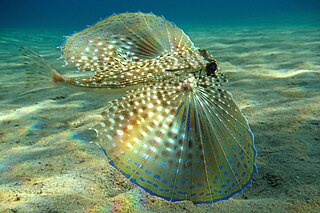
The flying gurnards are a family, Dactylopteridae, of marine fish notable for their greatly enlarged pectoral fins. As they cannot literally fly or glide in the air, an alternative name preferred by some authors is helmet gurnards. They have been regarded as the only family in the suborder Dactylopteroidei of the Scorpaeniformes but more recent molecular classifications put them in the order Syngnathiformes, in the superfamily Centriscoidea.
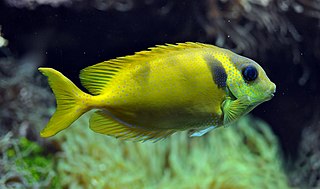
Neopterygii is a subclass of ray-finned fish (Actinopterygii). Neopterygii includes the Holostei and the Teleostei, of which the latter comprise the vast majority of extant fishes, and over half of all living vertebrate species. While living holosteans include only freshwater taxa, teleosts are diverse in both freshwater and marine environments. Many new species of teleosts are scientifically described each year.

The butterflyfish are a group of conspicuous tropical marine fish of the family Chaetodontidae; the bannerfish and coralfish are also included in this group. The approximately 129 species in 12 genera are found mostly on the reefs of the Atlantic, Indian, and Pacific Oceans. A number of species pairs occur in the Indian and Pacific Oceans, members of the huge genus Chaetodon.

Gasterosteoidei is a suborder of ray-finned fishes that includes the sticklebacks and relatives, the 5th edition of Fishes of the World classifies this suborder within the order Scorpaeniformes.
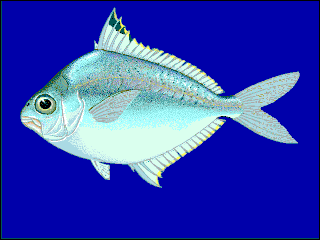
Leiognathidae, the ponyfishes, slipmouths or slimys / slimies, are a small family of fishes in the order Perciformes. They inhabit marine and brackish waters in the Indian and West Pacific Oceans. They can be used in the preparation of bagoong.
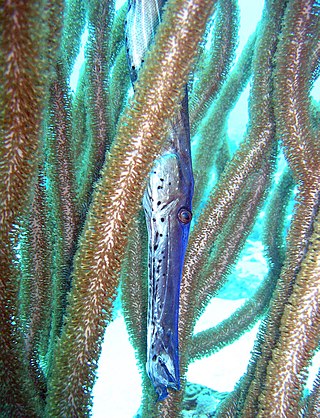
The Syngnathiformes are an order of ray-finned fishes that includes the sea moths, trumpetfishes and seahorses.

Feliformia is a suborder within the order Carnivora consisting of "cat-like" carnivorans, including cats, hyenas, mongooses, viverrids, and related taxa. Feliformia stands in contrast to the other suborder of Carnivora, Caniformia.
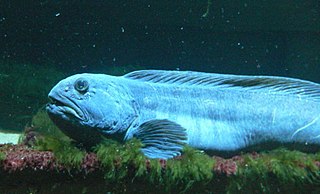
Zoarcoidei is a suborder of marine ray-finned fishes belonging to the order Scorpaeniformes. The suborder includes the wolffishes, gunnels and eelpouts. The suborder includes about 400 species. These fishes predominantly found in the boreal seas of the northern hemisphere but they have colonised the southern hemisphere.
Aulorhamphus is an extinct genus of prehistoric marine ray-finned fish that lived from the early to middle Eocene. It contains four species known from the Early Eocene of Italy and the Middle Eocene of Russia. It was an aulorhamphid, an extinct family of syngnathiform fishes.
Anguilloides is an extinct genus of prehistoric marine eel that lived in the early Eocene. It contains a single species, A. branchiostegalis. Fossils are known from the famous Monte Bolca site of Italy.

Cottoidei is a suborder of ray-finned fishes which, according to the 5th edition of Fishes of the World, is placed within the order Scorpaeniformes, alongside the scorpionfishes, flatheads, eelpouts, sticklebacks and related fishes.

Callionymiformes is an order of bony fish containing two families, the dragonets Callionymidae and the Draconettidae. In some taxonomies these families make up the suborder Callionymoidei of the wider grouping known as Perciformes, Nelson (2016) recognised the order but subsequent workers have suggested that if Callionymiformes is recognised as an order then the order Syngnathiformes is rendered paraphyletic and include Callionmyoidei within that taxon.

Syngnathoidea is a superfamily of the pipefish order Syngnathiformes. It is divided into two families, the speciose pipefish Syngnathidae, which includes the sea horses and monotypic Solenostomidae, the ghost pipefishes, which has just five species. The superfamily occurs worldwide in tropical, subtropical and temperate seas, especially in coastal waters around rock and coral reefs and among sea weed and sea grass beds. However, there are also pelagic species of pipefish and even freshwater species. In total the superfamily comprises in excess of 50 genera and nearly 300 species.

Aulostomoidei is a suborder of the order Syngnathiformes, which also contains groups such as the seahorses, pipefishes and dragonets.

Centriscoidea is a superfamily of the suborder Aulostomoidei, part of the order which includes the sea horses, pipefishes and dragonets, the Syngnathiformes. They are characterised by having the 5-6 anterior vertebrae being elongated and the pelvic fin has a single spine and four rays.

Siganoidea is a superfamily belonging to the suborder Percoidei which in turn is the largest suborder of the order Perciformes. It contains two families of largely Indo-Pacific distribution.

Eekaulostomus is an extinct genus of marine fish from the Paleocene of Chiapas, Mexico. It contains one species, E. cuevasae, and is the only member of the family Eekaulostomidae.
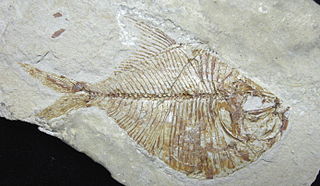
Lamprimorpha is a superorder of marine ray-finned fishes, representing a basal group of the highly diverse clade Acanthomorpha. Represented today only by the order Lampriformes, recent studies have recovered other basal fossil species of the group dating as far back as the Cenomanian stage of the Late Cretaceous. Some of these fossil taxa, such as the paraphyletic genus Aipichthys, are among the oldest known fossil acanthomorphs, and overall they appear to have been a major component of the marine fish fauna at that time. Lamprimorpha is thought to be the sister group to the superorder Paracanthopterygii, which contains cod, dories, and trout-perches.



















